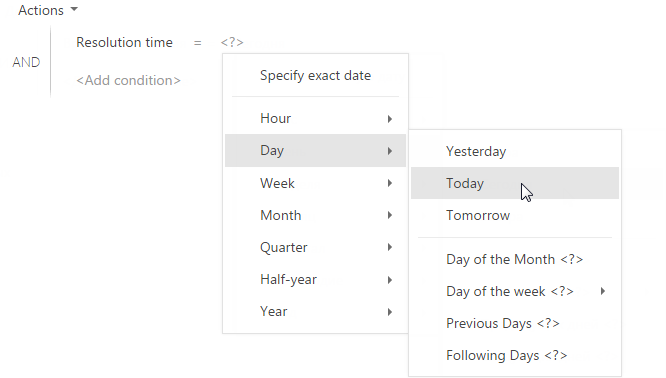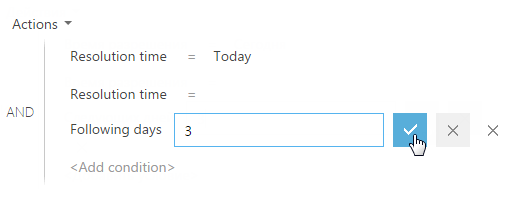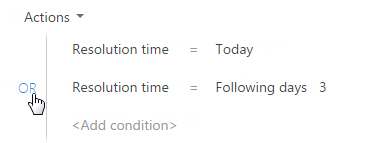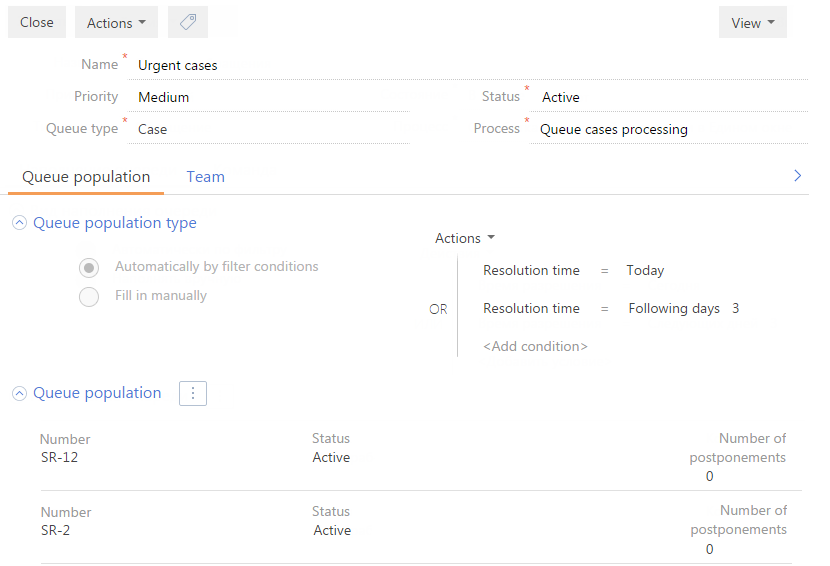Dynamic queues are populated automatically. The queue will be populated with records that match a specific filter condition. For example, dynamic queues can be used to process new cases that have not yet been assigned a responsible.
Let's take a closer look at how to create and populate dynamic case queues. To create a dynamic queue for cases where the resolution deadline is today or falls within the nearest three days: To do this:
-
Go to the Queues section.
-
Open the Queues setup view and add a new element.
-
Specify the name of the queue in the opened window.
-
Select the priority for the queue. The queue priority influences the display order of the queue elements on the agent desktop.
-
Select a system object in the Queue type field. In our case, it is “Case”. You can customize queue objects in the Queue objects lookup by clicking the Queue sorting setup action in the Queues section. After saving the queue you cannot change its type.
-
Select the "In progress" queue status.
-
Select a business process in the Process field. The selected business process will be run each time an agent takes an element from the queue. Select the “Agent desktop: Queue cases processing” business process for cases.
-
Select the Automatically by filter conditions option in the Queue population type field group on the Queue population tab.
-
Specify the filter conditions in the filter area.
-
To form a list of agents to process objects from the queue, go to the Team tab. Click the New button and select the required employees. The selected contacts can process the content of the queue from the agent desktop.
-
Save and close the page.
To view the content of the queue, select the Fill queues action from the action menu of the Queues section. Open the queue record. All applications in the current queue will be displayed on the Queue population detail (Fig. 4). The data is available in read-only mode.



